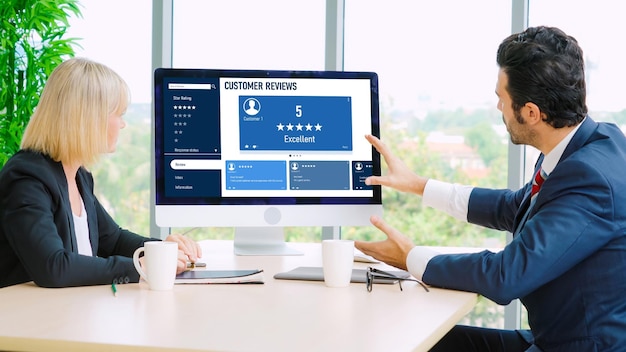E-commerce website development
Adrelm provides e-commerce website development services that are familiar with the latest in e-commerce best practices and can produce a site that will delight your customers and boost your conversion rate.
Boost Your eCommerce Sales with Smart, Fast, & Mobile-Friendly Platform

Shop Smarter: Unlock Our Powerful E-Commerce Services
Custom E-commerce Portals
We offer the best online eCommerce CRM to customize your portal and enhance the user experience. It ensures seamless navigation, simplified operations, and improved efficiency across your website, helping businesses boost engagement and customer satisfaction.
Online Shopping Carts
We provide the best eCommerce website design services with customized and robust online shopping carts, enabling customers to browse, select, and add products effortlessly for a seamless shopping experience.
AI-Powered Features
We revolutionize eCommerce software solutions by integrating AI-powered chatbots and intelligent virtual assistants that deliver personalized user assistance, enhance customer engagement, and ensure a seamless online shopping experience.
Blockchain-Enabled E-commerce
We harness blockchain technology to build decentralized eCommerce platforms that ensure security, transparency, and seamless peer-to-peer transactions. Our solutions foster trust and efficiency across every online interaction.
Web-Based POS system
Our web-based Point of Sale (POS) system streamlines business operations with real-time sales tracking, inventory control, and secure transactions. Designed for flexibility and accessibility, it lets you manage your entire retail operation from any device, anywhere.
Compliance Fit
We are a flexible and proactive eCommerce solution provider in India, delivering secure, compliant, and innovative online solutions. By following the highest industry standards, we help businesses build trust, ensure transparency, and achieve sustainable digital growth.
Steps that we follow in the process of developing an E-commerce Website
Best E-Commerce Website Designing & Development Agency
An e-commerce website allows your online store to display products and make it easy for customers to purchase them. Even if you can’t process all orders online, you can showcase part of your inventory for online shopping or allow customers to reserve items


Nature of Business
Whatever remains the business goal, an e-commerce project needs to be guided by both product research and research about the people we hope to sell them to. This can make the difference between success and ending up with a stack of merchandise that you can’t get rid of.
Determine the e-commerce Business Model
Several types of e-commerce business models exist, but the 2 main categories are business-to-business (B2B) and business-to-consumer (B2C). Knowing the difference and knowing where your e-commerce business falls is important. The bulk of online shops we interact with are business-to-consumer (B2C). Items or services on a B2C website are sold straight from businesses to the general public, without any third parties getting involved. Business-to-business (or B2B) are, as the name suggests, businesses that sell to other businesses.


Know the Audience
Understanding the potential customers touches every part of the e-commerce development process. Everything must be tailored to the potential customers: the user experience and user interface, visuals of the web design, the content, and more. We should know the details about who our potential customers are. What’s their background? What’s their income range? How old are they? And what competitors’ websites are they likely to purchase from?
Deciding the Right e-commerce platform
Choosing the right e-commerce platform is a critical step for your online business. The platform you select will determine how easily you can manage products, process payments, handle shipping, and scale your store as it grows. It’s important to consider factors like ease of use, customization options, integrations, and cost to ensure your store meets both your business needs and your customers’ expectations.

Driving Growth Together: Unlock the Potential of Your Online Store
Our solutions help you deliver a seamless shopping experience, manage products efficiently, reduce costs, and drive more sales.
Frequently Asked Questions (FAQs)
What kind of businesses or teams do you typically work with?
We work with every type of business and team, whether you are a startup, small & medium-sized, or large business across various industries. At our web designing company in India, we prioritize our clients’ needs, whether they want a website or a mobile app, and provide custom solutions to support businesses at every stage.
How does the software development outsourcing process work?
Our software development outsourcing process is simple & transparent. Here is a complete step-by-step guide to our software development:
1. Needs Assessment & Project Definition
2. Engagement Model Selection
3. Team Allocation
4. Project Development Begins
5. Quality Assurance & Testing
6. Delivery & Support
Whether you want to turn your business idea into life or upgrade your website or mobile app, our web and app development solutions are designed based on your unique needs.
What is your preferred development methodology?
We prefer agile development methodology using the Scrum framework because it speeds up development, allows work with real-time communication, and can easily adapt to evolving demands based on growth. However, choosing a development methodology depends on your business requirements and objectives.
Do you develop software for both mobile & web platforms?
Yes! We build software for both mobile & web. With a team of skilled developers, we develop all type of custom softwares for mobile & web-based platforms. Also, We ensure your software runs smoothly on all devices by using our responsive design, cutting-edge technology integration, and native or cross-platform development.
What’s your post-launch policy?
We provide mobile app solutions and web design and development services in India for post-launch support and maintenance. This ensures your software keeps performing high and smoothly at all times. Our post lauch policy includes:
- Bug Fixes & Updates
- Performance Monitoring
- Feature Enhancements
- Security Patches
I want to outsource software development. What engagement options do you offer?
We offer four engagement models that you can choose from as per your business needs.
- Fixed Price – This model is best for fixed-scope projects with defined timelines & deliverables.
- Time and Materials – In this model, you pay only for the resources you used, with the actual time duration.
- Dedicated Team – In this model, a full team of developers, designers, & project managers works on your project.
- Hybrid Models – You can utilize project based tasks and a dedicated team for flexibility & efficiency.
Recognized as the best website design company in India, we offer our clients the best options and guide them with full transparency.
Can we start with a smaller engagement or pilot before scaling?
Definitely! We understand that scaling up a business requires time, effort, and investment. This is why we offer flexible engagement models with a pilot project, so you can conduct a preliminary trial to identify potential issues that may occur while scaling and fix them. It is a good strategy to meet long-term objectives and changing business demands.
Does Invoidea cover all stages of the SDLC?
Yes, Invoidea provides complete software development services which cover every stage of the Software Development Life Cycle (SDLC). Here are the key stages of our process:
- Planning
- Requirements Analysis
- Design
- Coding/Development
- Testing
- Deployment
- Maintenance
As a trusted website designing company in India, we keep our clients updated throughout the development process to ensure transparent communication & enhanced satisfaction.
Can your custom software scale as my business grows?
Absolutely. We build custom software with a focus on a flexible and scalable approach, which can easily manage increased users, features, & data volumes when your business grows. At the best website design company, we also ensure your application remains secure and performs fast, so there is no interruption when you scale.
Are your development practices globally compliant?
Yes! We strictly follow industry regulations and comply with global security standards to deliver a secure, fast, & scalable platform. Our web and mobile app development practices align with:
- GDPR guidelines
- OWASP Standards
- Industry-specific regulations
- Clean code & best practices
How do you control the quality of the software you deliver?
To ensure quality of software, we follow a detailed quality assurance process at every stage of the development. This includes:
- Code Testing
- Automated & Manual Testing
- Continuous Integration & Deployment (CI/CD)
- User Acceptance Testing (UAT)
Our team delivers a high-quality, fast, & responsive platform through our mobile app solutions and web development services with strict QA & industry best practices.
Decades of successful global IT outsourcing experience.
There are several advantages of outsourcing software development to India over Latin America, Philippines, or Eastern Europe. Here are the key benefits:
- Cost-Saving – Lower labor costs & reduced operational expenses
- Skilled Workforce – Large talent pool, English proficiency, & technical expertise
- Established Industry – Mature outsourcing industry, proven track record, & government support
- Time Zone Advantages – Overlap with global time zones & 24×7 services
- Scalability and Flexibility – Easy team scaling & focus on core competencies
Invoidea is the best website design company in India with access to a large pool of talented and creative developers who work across global time zones. By partnering with us, businesses ensure time efficiency, reduce financial expenses, deliver flawless operation at all times, and drive continuous business growth.
